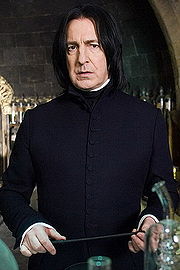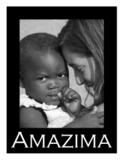 Hard to believe that the longest day of the year is tomorrow! I've figured out how we're going to celebrate St. John's Day. I've got my Finnish flag all ready to fly, and a menu figured out, more or less. I think we'll have fish with a creamy cucumber salad, some potatoes, a berry dessert, with candles and lots of flowers on the table. Sounds nice, doesn't it? I found this citation at an excellent, and well-researched Astrology site, and it explains a lot, enjoy:
Hard to believe that the longest day of the year is tomorrow! I've figured out how we're going to celebrate St. John's Day. I've got my Finnish flag all ready to fly, and a menu figured out, more or less. I think we'll have fish with a creamy cucumber salad, some potatoes, a berry dessert, with candles and lots of flowers on the table. Sounds nice, doesn't it? I found this citation at an excellent, and well-researched Astrology site, and it explains a lot, enjoy:St John's Day, June 24:And a note about decorations and menu!
The Christian Midsummer Festival
June 24, marking the Birth of Saint John the Baptist, is St John's Day, a major Christian Feast. It is one of the "quarter days", signalling the beginning of each quarter of the year and welcoming each of the four seasons.St John the Baptist, baptising Jesus These holidays were communally celebrated during the "Age of Faith", reassigned from already established astrologically-based pagan festivities. The other quarter days are Christmas on December 25, Lady Day (Annunciation) on March 25 and Michaelmas on September 29.
According to the Gospel of Luke, John the Baptist was the cousin of Jesus Christ (the great soul that Christians believe to be the Son of God, the redeemer, or messiah). As the forerunner of the messiah, John is a very important saint. Jesus once said of his cousin: "Truly, I say to you, among those born of women there has risen no one greater than John the Baptist" - Matthew 11:11
The birth of Jesus (Christmas) is celebrated in December at the Winter Solstice (the birth of the Sun, as the Sun begins to grow in light) and the Bible indicates that John was born six months before Jesus (Luke 1:26), so his birth celebrates the Summer Solstice, as the Sun begins to diminish in light. John understood that his role was to prepare the way for Christ, and then to step aside. "He must increase, but I must decrease" (John 3:30). This is a clear reference to the
astrological key that, when turned in the lock, opens the door to a deeper understanding of the nature of religion.
In Sweden [presumably Finland too!?], flowers are an important aspect of the Midsummer festival. Girls and women weave wreaths of flowers to wear in their hair for the day. Wreaths or bouquets are traditionally made with seven or nine different types of wildflowers. Homes are similarly decorated: a flower wreath may be hung from the ceiling to bring blessing to the house and a pair of young birch branches put at the front door..... Family and friends get together and feast on pickled herring, boiled potatoes, sour cream, crisp bread, beer and schnapps, followed by strawberries or fresh fruit for dessert.So, grab a friend, some flowers, head outside, and enjoy the summer evening! I certainly will.
Credit to Astrology.com for the research, their References:
Summer Festivals: St John's Day, Folk Customs of the Carpatho-Rusyns. This is an extensive article and well worth a look.
St John the Baptist, Catholic Online. This is part of a huge resource on Catholicism, with excellent calendars for feast days, saints, patron saints, angels etc.
The Witches' Sabbats, a valuable on line collection of articles by Mike Nichols on the important pagan festivals
J. G. Frazer: The Golden Bough, MacMillan & Co. Ltd, London, 1923
A. Hislop: The Two Babylons, Loizeaux Brothers; 2nd edition (July 1990). Now out of print, see The Two Babylons on line
M. D. Magee Sun Gods as Atoning Saviours an online resource investigating the origins of Christian and Jewish teachings
B. G. Walker: The Woman's Encyclopedia of Myths and Secrets, Harper & Row, NY 1983
R. Graves: The White Goddess, Faber & Faber, London 1961











2 comments:
happy solstice! my favorite day of the year!
that was i.
Post a Comment